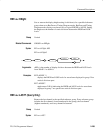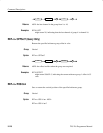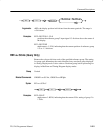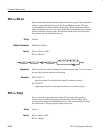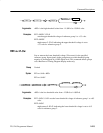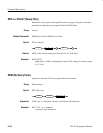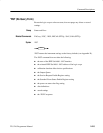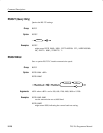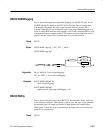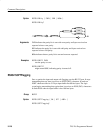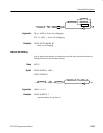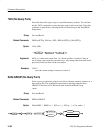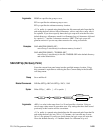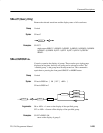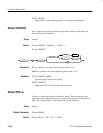
Command Descriptions
TLS 216 Programmer Manual
2–217
RS232:HARDFlagging
Sets or queries the input and output hard flagging over the RS-232 port. It uses
the RFR (Ready For Receive) and CTS (Clear To Send) lines to control data
transmission. On output, the logic scope transmits data only when CTS is
asserted. When CTS is not asserted, the logic scope stops transmitting data. On
input, it asserts RFR until the receive queue is full. Then it unasserts RFR to stop
transmission from an external printer. CTS remains unasserted until the receive
queue is not full. Then CTS is asserted again to restart transmission.
RS232
RS232:HARDFlagging { ON | OFF | <NR1> }
RS232:HARDFlagging?
:
RS232
HARDFlagging
<Space>
ON
?
OFF
<NR1>
ON or <NR1> 0 turn on hardflagging.
OFF or <NR1> = 0 turn off hardflagging.
RS232:HARDFLAGGING ON
turns on hard flagging.
RS232:HARDFLAGGING?
might return 0, indicating hardflagging is off.
RS232:PARity
Sets or queries the parity used for all RS-232-C data transfers. Parity adds a bit
to the character sequence. When parity is odd or even, the logic scope generates
the selected parity on output and checks all input against the selected parity.
When parity is none, the logic scope performs no input parity error checks and
generates no output parity.
RS232
Group
Syntax
Arguments
Examples
Group



